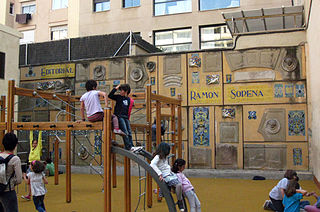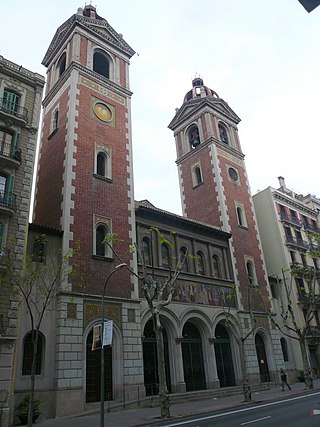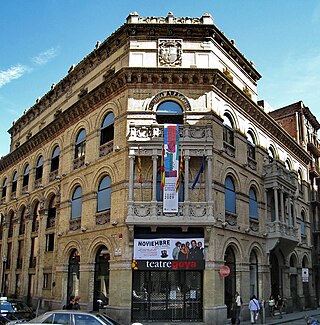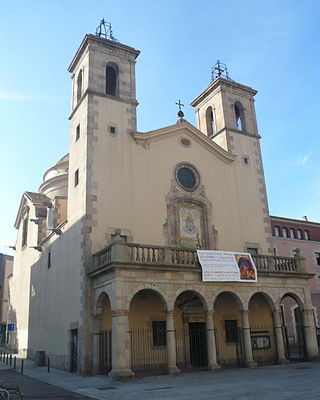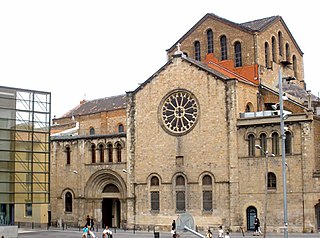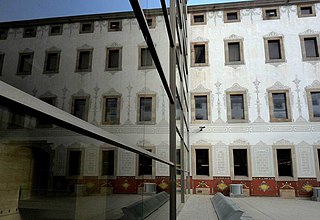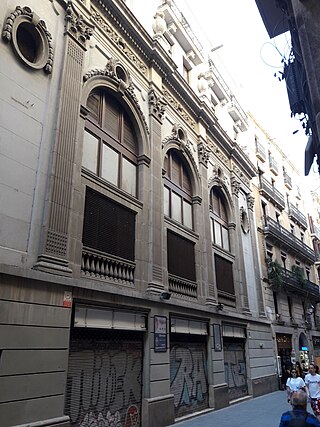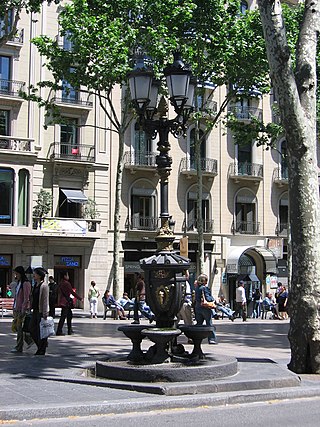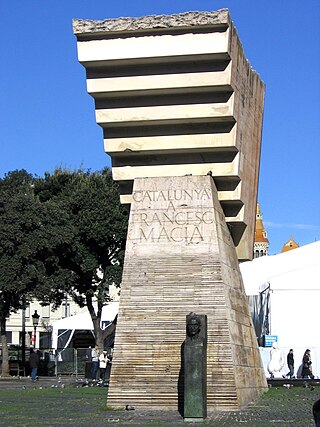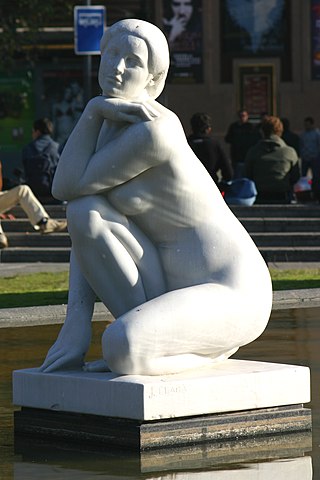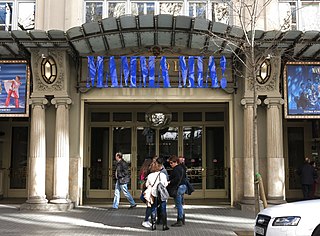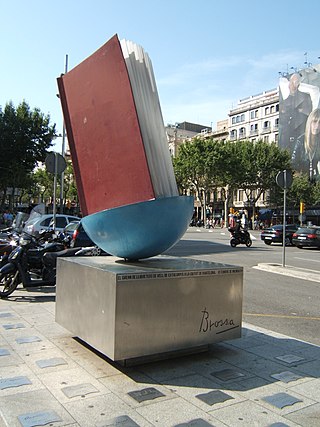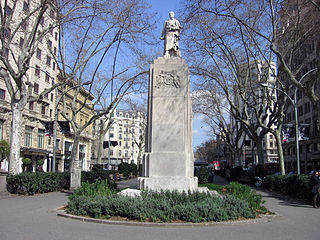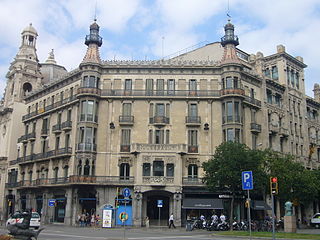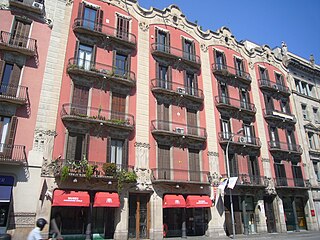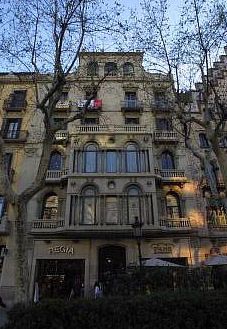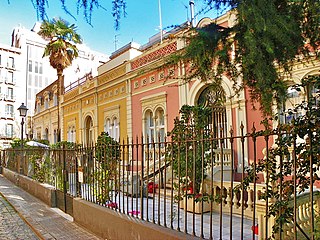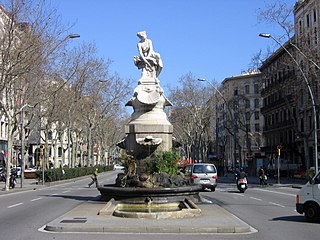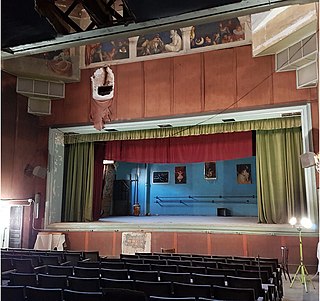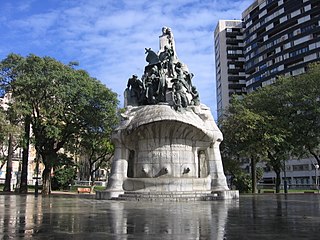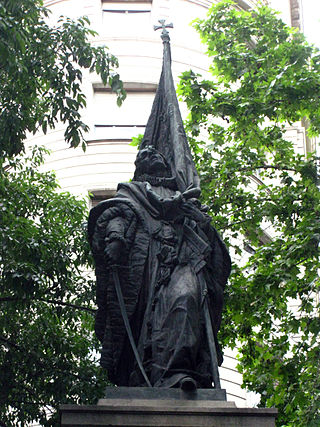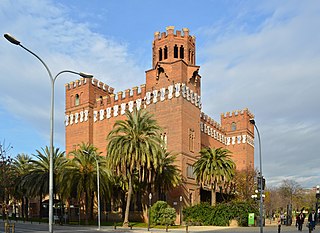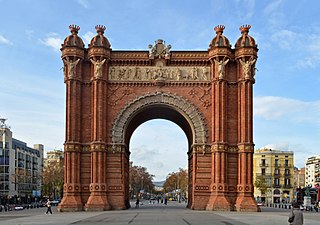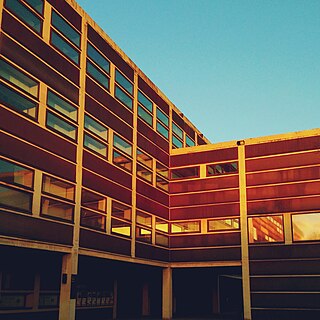Self-guided Sightseeing Tour #10 in Barcelona, Spain
Legend
Guided Free Walking Tours
Book free guided walking tours in Barcelona.
Guided Sightseeing Tours
Book guided sightseeing tours and activities in Barcelona.
Tour Facts
11.4 km
217 m
Experience Barcelona in Spain in a whole new way with our free self-guided sightseeing tour. This site not only offers you practical information and insider tips, but also a rich variety of activities and sights you shouldn't miss. Whether you love art and culture, want to explore historical sites or simply want to experience the vibrant atmosphere of a lively city - you'll find everything you need for your personal adventure here.
Activities in BarcelonaIndividual Sights in BarcelonaSight 1: Jardins Maria Mercè Marçal
The Maria Mercè Marçal Gardens are a green area in the Nova Esquerra neighbourhood of Barcelona's Eixample, located in the interior of the block between Carrer de Provença, Carrer Viladomat, Carrer Rosselló and Carrer del Comte Borrell. With an area of about 1,320 m², they were inaugurated in 2002 on the site of the headquarters of the Editorial Sopena. They were named in honour of the Barcelona poet and feminist Maria Mercè Marçal (1952-1998)
Sight 2: La Villarroel
La Villarroel is the current name of a theatrical space opened in 1972 that has always been known as the Sala Villarroel. It is on Villarroel Street -núm. 87- of Barcelona. Ángel Alonso, Adolf Bras, Alfons Guirao and José A. Ortega were the four businessmen who carried out the initial project. The first show was Non Plus Plis dels Comediants, a company that would rehearse their plays until they moved to Canet de Mar. From then on it was called Villarroel Teatre.
Sight 3: Sant Josep Oriol
The Basilica of Saint Joseph Oriol is a basilica in Barcelona, Catalonia.
Sight 4: Teatre Goya
The Goya Theatre is a performance hall in Barcelona, located in the Centre Aragonès building.
Sight 5: Sant Pere Nolasc
The Church of Sant Pere Nolasc, formerly of Sant Sever and Sant Carles Borromeu, is a building located in Plaça de Castella in the Raval district of Barcelona, listed as a cultural asset of local interest. It is the only part that remains of the old convent of the Pauls, called Casa de Sant Sever.
Sight 6: Santa Maria de Montalegre
Santa Maria de Montalegre is a church located on Carrer de Valldonzella in the Raval district of Barcelona, which is part of the Casa de la Caritat complex, listed as a cultural asset of local interest.
Sight 7: Pati Manning
The Casa de la Caritat is a group of buildings in the Raval district of Barcelona, listed as a Cultural Asset of Local Interest. It currently houses a cultural complex made up of several institutions, such as the Centre for Contemporary Culture of Barcelona, in the Pati de les Dones, and the Centre for Cultural Studies and Resources (CERC) of the Barcelona Provincial Council, in the Pati Manning, and the Blanquerna Faculty of Communication and International Relations of the Ramon Llull University. The House itself has 2 Corpus Christi Giants exhibited for La Mercè in the Manning Courtyard and in the Casa dels Entremesos and those of the Carnival permanently exhibited in the Palau de la Virreina
Sight 8: Poliorama
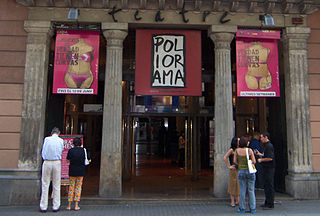
The Poliorama Theater is a theater, former cinema, located on the ground floor of the building of the Royal Academy of Sciences and Arts of Barcelona, at Rambla, 115. Opened in 1899 as a cinema, it later alternated its use with theatrical performances. It has been operating since 1976 as a theatre. Between 1937 and 1939 it was called the Teatre Català de la Comèdia.
Sight 9: La Rambla
La Rambla is considered the most well known street in central Barcelona. A tree-lined pedestrian street, it stretches for 1.2 kilometres connecting the Plaça de Catalunya in its center with the Christopher Columbus Monument at Port Vell. La Rambla forms the boundary between the neighbourhoods of the Barri Gòtic to the east and the El Raval to the west.
Sight 10: Club Capitol
The Club Capitol was a theater located on La Rambla and Carrer de Santa Anna in Barcelona. Founded in 1926 as a cinema, in 1989 it was renovated and converted into a theater in 1997. It had two screens, Club Capitol 1 with 523 seats, and Club Capitol 2 with 274. The last performance was held on March 12, 2020.
Sight 11: Font de Canaletes
Font de Canaletes is an ornate fountain, crowned by a lamp post, in Barcelona, Catalonia, in Rambla de Canaletes, the upper part of La Rambla, near Plaça de Catalunya.
Sight 12: Monument to Francesc Macià
The Monument to Francesc Macià is a sculpture located at the southern end of Plaça de Catalunya in Barcelona, in front of La Rambla, the work of Josep Maria Subirachs and inaugurated on 25 December 1991.
Sight 13: The Goddess
The Goddess, or The Enigma, is a white marble sculpture by the sculptor Josep Clarà i Ayats, located in Plaça Catalunya in Barcelona, although the original is in the lobby of the Casa de la Ciutat, and another copy is exhibited in the Museu Nacional d'Art de Catalunya. It is one of the best known works of the shield, and one of the two that the City Council commissioned him as part of the project to beautify squares, gardens and streets for the International Exhibition of 1929.
Sight 14: Teatre Borràs
The Borràs Theater is an old cinema, transformed into a theater in Barcelona. It belongs to the Balañà Group.
Sight 15: Teatre Tívoli
The Tivoli Theatre is a building located at Carrer de Casp, 6-20 in Barcelona, listed as a cultural asset of local interest. It is one of the largest theatres in the city and has hosted performances of opera and zarzuela, as well as musical works and Catalan theatre, even seeing their world premiere or premiere in the city.
Sight 16: Homenatge al Llibre
The Homage to the Book is a corporeal poem or urban poem by Joan Brossa created in 1994 and designed by the visual artist Josep Pla-Narbona, located at the intersection of Passeig de Gràcia and Gran Via de les Corts Catalanes, in Barcelona. It was commissioned by the Guild of Old Booksellers of Catalonia. The location of this work by Brossa is not accidental; it is precisely in Passeig de Gràcia where the stands of the Ancient and Modern Second-Hand Book Fair, organized by the aforementioned guild, are displayed annually.
Sight 17: A Joan Güell i Ferrer
A Joan Güell i Ferrer is a sculptural monument located on Gran Via de les Corts Catalanes near the junction with the Rambla de Catalunya in Barcelona. Created in 1888, it was the work of the architect Joan Martorell and the sculptors Rossend Nobas, Torquat Tasso, Eduard B. Alentorn, Maximí Sala and Francesc Pagès i Serratosa. Destroyed in 1936, it was rebuilt by the architect Joaquim Vilaseca i Rivera and the sculptor Frederic Marès in 1945.
Sight 18: Casa Pia Batlló
Casa Pia Batlló is a building located on the corner of Rambla de Catalunya and Gran Via de les Corts Catalanes, listed as a cultural asset of local interest.
Sight 19: Museu del Modernisme Català
The Museum of Catalan Modernism (MMCAT) – also known as the Museum of Modernism of Barcelona (MMBCN) – is a museum inaugurated in 2010 and dedicated entirely to Catalan modernism. It occupies the thousand square meters divided into two floors of a modernist building, from 1902 and 1904, by the architect Enric Sagnier, at Carrer de Balmes 48, in Barcelona, between the Provincial Council and the Consell de Cent. It shows 350 works, including paintings, sculptures, furniture and stained glass, by 42 artists representative of this artistic movement. The vast majority of the works come from the private collection of the Pinós-Guirao family, and many are unpublished. You can find pieces by Antoni Gaudí, Joaquim Mir, Hermen Anglada Camarasa, Ramon Casas and Santiago Rusiñol. It is the first Museum of Catalan Modernism open to the world.
Sight 20: Museu Tàpies
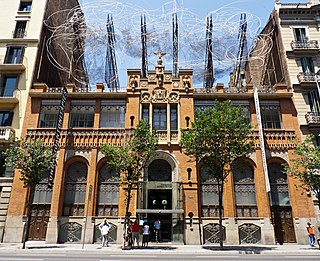
The Tàpies Museum is a museum and cultural centre located in the former headquarters of the Montaner i Simon publishing house, at Carrer d'Aragó, 255 in Barcelona. It is mainly dedicated to the life and work of the Catalan painter Antoni Tàpies (1923-2012) and was founded by the artist himself in 1984 under the name of Fundació Antoni Tàpies, with the idea of creating a centre for the study and promotion of contemporary art. It has more than 300 original works, donated by the painter himself and by Teresa Tàpies and opened its doors in June 1990. In addition to the permanent exhibitions dedicated to the Barcelona painter, the museum holds numerous temporary exhibitions that cover all artistic genres. It also has a club of friends of the foundation, the Friends of the Antoni Tàpies Foundation.
Sight 21: Museu del Perfum
The Perfume Museum of Barcelona, officially known in Catalan as Museu del Perfum, was founded in 1961 to exhibit an evolution of perfume vessels throughout the ages.
Sight 22: Passatge de Permanyer
Passatge de Permanyer is an alley that crosses the block of houses framed by Roger de Llúria, Pau Claris, Diputació and Consell de Cent streets, in the Eixample district of Barcelona. The passage, which honours the memory of Francesc Permanyer i Tuyets, is made up of a set of English-style huts. It was designed in a unitary way by Jeroni Granell i Barrera in 1864. The houses consist of a semi-basement and a raised ground floor, with a small garden in front. Conceived in an eclectic style, they incorporate classical elements and others of an Arabizing nature. The houses at the ends, in the same style, have one more floor, of the mansard type. This complex is included in the Barcelona City Council's catalogue of cultural assets of local interest. It is a work protected as a Cultural Asset of Local Interest.
Sight 23: Font de Diana
The Fountain of Diana is a sculptural monument located at the intersection of Gran Via de les Corts Catalanes and Carrer de Roger de Llúria, in the Eixample district of Barcelona. Created in 1898 and installed in its location in 1919, it was the work of the sculptor Venanci Vallmitjana i Barbany. This is a work registered as a Cultural Asset of Local Interest (BCIL) in the Inventory of Catalan Cultural Heritage with the code 08019/1446.
Sight 24: Taller Masriera
The Masriera Workshop is a building located at Carrer de Bailèn, 70-72, on the Dreta de l'Eixample in Barcelona, listed as a Cultural Asset of Local Interest.
Sight 25: Monument a Bartomeu Robert
The Monument to Doctor Robert is a sculptural ensemble today inside the Plaça de Tetuan in Barcelona, in the Eixample district. It is dedicated to Bartomeu Robert, a Catalanist doctor and politician, mayor of Barcelona between March and October 1899. The monument is considered a cultural asset of local interest (BCIL) in the Inventory of Catalan Cultural Heritage with the code 08019/1598.
Sight 26: Monument to Rafael Casanova
The Monument to Rafael Casanova is a sculpture located at the intersection of Ronda de Sant Pere and Carrer d'Alí Bei in Barcelona, listed as a cultural asset of local interest. A work by the sculptor Rossend Nobas (1888), it is a tribute to Rafael Casanova i Comes, the last chief councillor of Barcelona.
Sight 27: Castle of the Three Dragons
The Castle of the Three Dragons, is the popular name given to the modernisme building built between 1887 and 1888 as a Café-Restaurant for the 1888 Universal Exposition of Barcelona by Lluís Domènech i Montaner. This name was probably adopted from the 1865 play by Serafí Pitarra.
Sight 28: Monument a Rius i Taulet
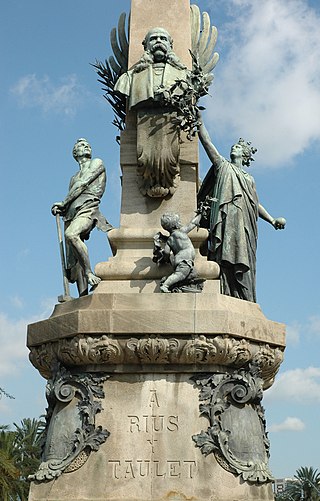
The monument to Rius i Taulet is located on Passeig de Lluís Companys in Barcelona and is listed as a cultural asset of local interest. It is dedicated to Francesc de Paula Rius i Taulet, mayor of Barcelona during the 1888 Exposition.
Sight 29: Triumphal Arch
The Arc de Triomf is a memorial arch in Barcelona, Catalonia, Spain. It was built by architect Josep Vilaseca i Casanovas as the main access gate for the 1888 Barcelona World Fair. The arch crosses over the wide central promenade of the Passeig de Lluís Companys, leading to the Ciutadella Park that now occupies the site of the world fair. It is located at the northern end of the promenade, facing the Passeig de Sant Joan.
Sight 30: Parc de l'Estació del Nord
The Parc de l'Estació del Nord is located in the Fort Pienc neighborhood in the Eixample district of Barcelona. It was created in 1988 with a project by Andreu Arriola, Carme Fiol and Enric Pericas. In 1999 it was expanded by Patrizia Falcone.
Sight 31: Museu de la Música
The Museu de la Música de Barcelona is a museum in Barcelona, Spain that houses a collection of musical instruments from around the world as well as biographical documents, from ancient civilisations to new technologies from the 21st century. The museum collection comprises 2000 musical instruments, 500 of which are on display, including one of the best guitar collections of the world. The museum covers historical, conservational and research aspects and promotes the city’s musical heritage.
Sight 32: Teatre Nacional de Catalunya
Teatre Nacional de Catalunya is a public theatre located in Barcelona, Catalonia, Spain. It was created by the Culture Department of the Catalan Government to normalize and enhance the theatre and dance in Catalan language and their creators.
Share
Disclaimer Please be aware of your surroundings and do not enter private property. We are not liable for any damages that occur during the tours.
GPX-Download For navigation apps and GPS devices you can download the tour as a GPX file.
